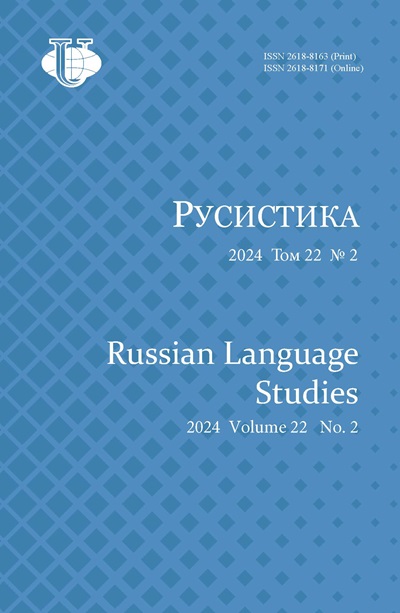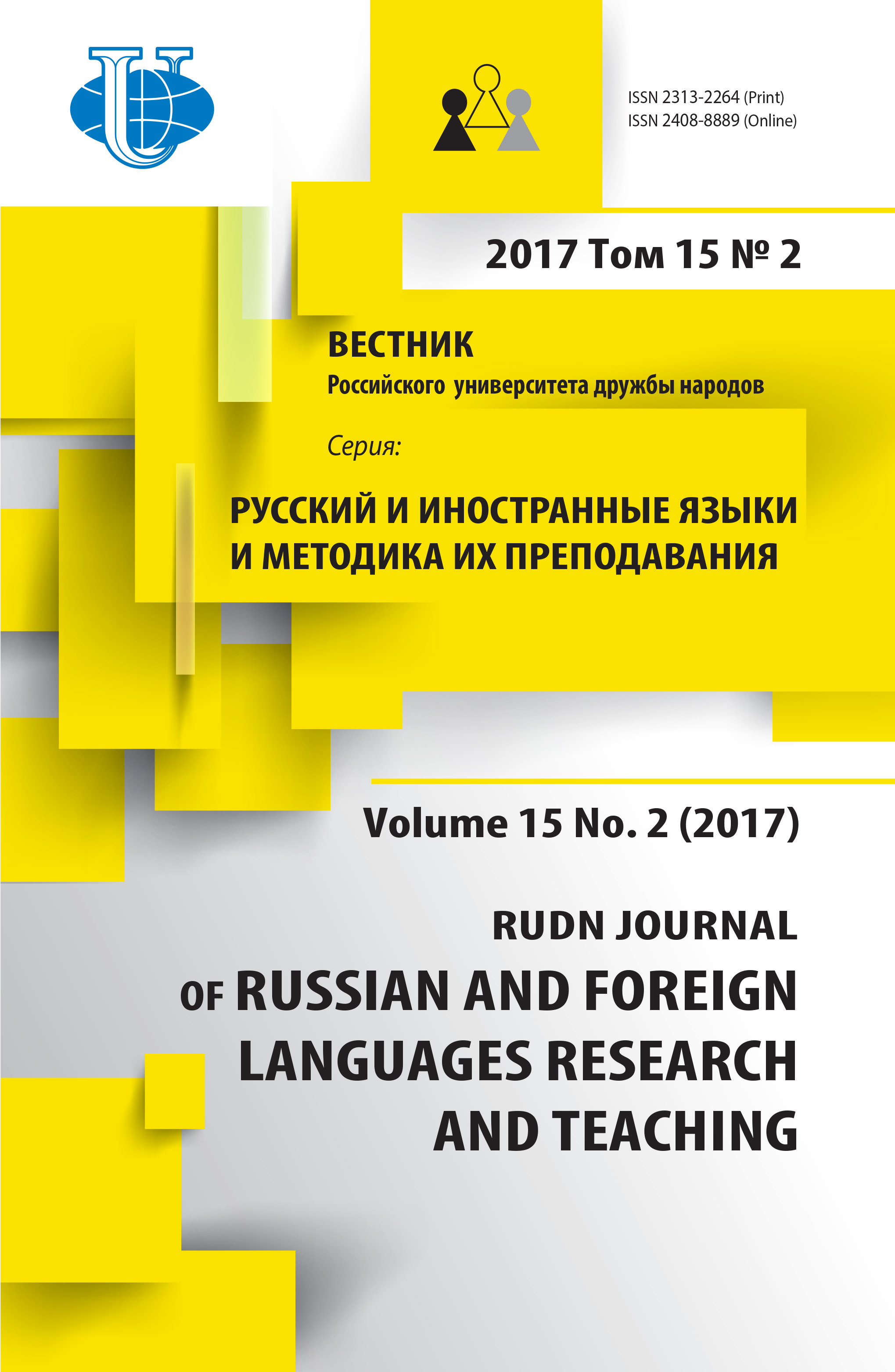LEXICOGRAPHIC REPRESENTATION OF PSYCHOLINGUISTIC MEANING OF THE WORD
- Authors: Sternin J.A.1
-
Affiliations:
- Voronezh State University
- Issue: Vol 15, No 2 (2017)
- Pages: 204-214
- Section: Articles
- URL: https://journals.rudn.ru/russian-language-studies/article/view/16198
- DOI: https://doi.org/10.22363/2313-2264-2017-15-2-204-214
Cite item
Full Text
Abstract
This article discusses the various variants of lexicographical description of psycholinguistic meaning. The purpose of lexicographical description of psycholinguistic meaning is to present experimentally obtained psycholinguistic description of the semantics of the word in dictionary form suitable for useby ordinary native speakers, reflecting the nuclear and peripheral components of word Semantics.The paper is based on the results of associative experiments of different types, processing semantic interpretation of the results of psycholinguistic research.The study showed that different variants of lexicographical description of psycholinguistic meaning of the word can be offered. These variants vary in the amount and structure of the dictionary definition, in detailed description of the semantics.Variant 1 - the meaning is given in brief formulation followed by full description in seme terms in coherent definition with indexes indicating the brightness of each seme.Variant 2 - integrating the results of several types of associative experiments; integrated meanings are formulated. Lexicographical meaning is given in an abbreviated form, complete seme description is optional.Variant 3 - abbreviated version of the integrated lexicographical description of psycholinguistic meaning, including semantic components with index 0,01 and above, without connotative and functional characteristics. Peripheral components with index less than 0.01 provide a list as a reference section.With limited volume of the dictionary the description abridged versions are preferred/ If more extended definition is possible, entries with the inclusion of semantic components - both nuclear and peripheral - are preferred as it significantly increases the informative content of the lexicographic edition.In any case it is necessary to include in the definition the index of the brightness of each of the semantic component in language consciousness of native speakers and present meanings in the structure of the entry in descending order according to total brightness index.Lexicographic description of the results of fixing of psycholinguistic meanings makes it possible to fix the actual state of language consciousness of native speakers and to form an information base to describe everyday language consciousness.Consistent comparison of psycholinguistic entries and entries of traditional dictionaries is promising, which allow to fix the semantic development of the studied words in modern language consciousness.
About the authors
Joseph Abramovich Sternin
Voronezh State University
Author for correspondence.
Email: sterninia@mail.ru
Doctor of philological sciences, professor, Honored scienеtist of the Russian Federation, Professor, Department of General Linguistics and Stylistics, director of the Centre for Communication Studies FGBOU VO “Voronezh State University”
University Square, 1, Voronezh, Russia, 394018References
- Sternin I.A. Psycholinguistic meaning // Bulletin of Russian Peoples’ Friendship University. Series: Russian and foreign languages, and methods of their teaching. 2011. № 1. P. 5—13. (In Russ.)
- Sternin I.A., Rudakova A.V. Psycholinguistic meaning of the word and its description. Theoretical problems: the monograph. LAP Lambert Academic Publishing: Saarbr cken, 2011. 192 p. (In Russ.)
- Rudakova A.V. Theoretical and applied problems of psycholinguistic lexicography: monograph. Voronezh: “Istoki” Publ., 2014. 180 p. (In Russ.)
- Vinogradova O.E., Sternin I.A. Psycholinguistic methods in the description of semantics of the word. Voronezh: “Istoki” Publ., 2016. 158 p. (In Russ.)















